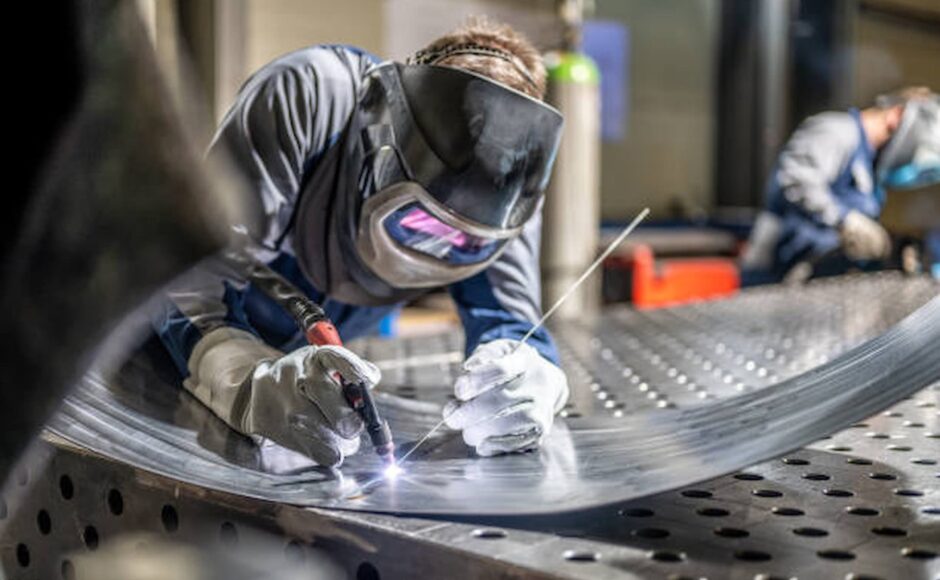Whether you are working on a small DIY project or a large-scale industrial project, metalworking is an essential skill to have. From creating intricate jewelry pieces to building massive structures, the art of metalworking has been around for centuries and continues to evolve with new techniques and technologies.
Metalworking involves shaping and manipulating raw materials such as metal sheets, rods, bars, and wires into desired forms. This process requires a combination of specialized tools, techniques, and knowledge to transform raw materials into functional and aesthetically pleasing products.
Types Of Metalworking
There are various types of metalworking processes, each serving different purposes and producing unique results. Some of the most common types include:
1. Cutting
Cutting is a fundamental process in metalworking that involves removing material from a larger piece to create smaller, more manageable pieces. This can be done through various methods such as sawing, shearing, and punching.
2. Joining
Joining techniques are used to connect two or more metal pieces. Some of the most common joining methods include welding, brazing, and soldering.
3. Forming
Forming involves reshaping metal pieces into desired shapes and sizes. This can be done through processes such as bending, stretching, and rolling.
4. Machining
Machining is a process that involves removing material from a workpiece using cutting tools to create precise and intricate shapes. Some of the most common machining techniques include milling, drilling, and turning.
5. Casting
Casting is a process where molten metal is poured into a mold and left to cool and solidify, creating a desired shape. This process is commonly used for creating complex shapes such as gears and engine parts.
6. Molding
Molding is a similar process to casting, but instead of using molten metal, it uses powdered metal and a binding agent. This process is known as Metal Injection Molding (MIM) and has gained popularity in recent years due to its cost-effectiveness and ability to produce complex shapes with high precision.
The Types Of Metals Used In Metalworking
Different metals are used in metalworking, each with unique properties and characteristics. The most commonly used metals include:
1. Steel
Steel is an alloy made primarily from iron and carbon. It is one of the most versatile and widely used metals in metalworking due to its strength, durability, and affordability.
2. Aluminum
Aluminum is a lightweight and corrosion-resistant metal that is commonly used in industries such as aerospace, automotive, and construction.
3. Copper
Copper is known for its excellent electrical and thermal conductivity, making it an essential metal in industries such as electronics and telecommunications.
4. Brass
Brass is an alloy made of copper and zinc, known for its attractive golden color and resistance to corrosion. It is commonly used in decorative items, musical instruments, and plumbing fixtures.
5. Bronze
Bronze is an alloy made of copper and tin, known for its strength, ductility, and beautiful golden-brown color. It has been used throughout history for creating weapons, tools, and sculptures.
Tools And Equipment Used In Metalworking
To achieve precise and high-quality results, metalworkers use various specialized tools and equipment. Some of the most common ones include:
1. Hammers and Mallets
Hammers and mallets are used for shaping, bending, and striking metal pieces into desired forms.
2. Anvils
Anvils are heavy blocks of metal with flat surfaces used for shaping and forming metal pieces.
3. Welding Equipment
Welding equipment, such as welding machines, torches, and filler materials, are used to join metal pieces together.
4. Lathes
Lathes are machines that rotate a workpiece on its axis while a cutting tool removes material and creates precise shapes.
5. Grinders
Grinders are used for smoothing and shaping metal pieces by removing excess material.
The Future Of Metalworking
As technology continues to advance, so does the world of metalworking. With the emergence of 3D printing and other additive manufacturing processes, the possibilities for creating intricate metal objects are endless.
Moreover, sustainability has become a top priority in the metalworking industry, leading to the development of more eco-friendly processes and materials. This not only benefits the environment but also allows for cost savings and improved efficiency.
In conclusion, metalworking is a fascinating blend of art and science that has played a crucial role in human civilization. It continues to evolve, opening up new possibilities and pushing the boundaries of what is possible with raw materials and human ingenuity.
So whether you are a hobbyist or a professional metalworker, continue honing your skills and mastering the magic of turning raw materials into masterpieces.


